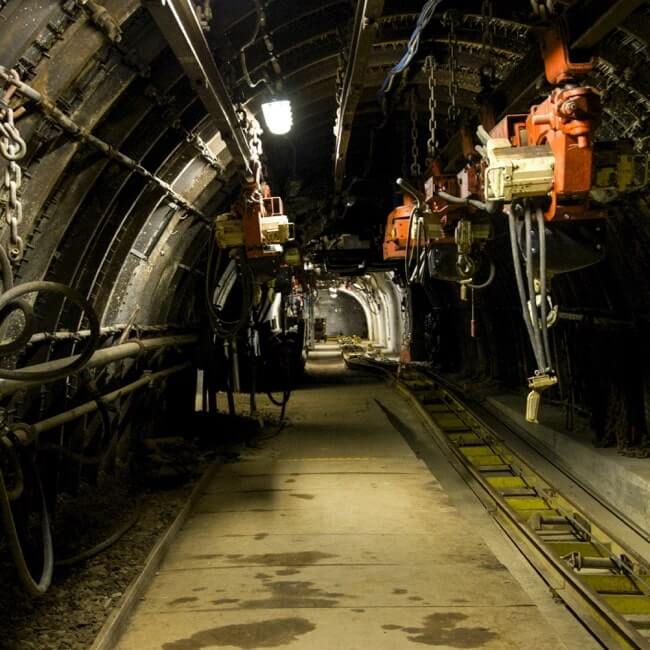Cumulative impacts on lithium: guidelines for integration and approach

By Ulises González, environmental project manager at ERM Argentina
The analysis of cumulative impacts is a pending and incipient subject in the environmental and social impact studies (ESIA) of projects throughout Latin America.
In Argentina and the region, although efforts have been made to incorporate recommendations regarding cumulative impacts through the Latin American Network of Environmental Impact Assessment Systems (REDLASEIA*), today there are severe gaps in its effective application due to legal ambiguity and the lack of precise local tools that can reflect the inherent complexity of these impacts.
Faced with global challenges such as climate change, the alteration of biogeochemical cycles, access to safe water, the loss of biodiversity, human rights vulnerability and the growing wave of social conflicts, addressing cumulative impacts would result in an effective instrument to understand the holistic impact on a given environmental and social environment, and promote the development of key information for decision-making in comprehensive, adaptive and sustainable management.
In 2015**, the International Finance Corporation (IFC) proposed the concept of cumulative impacts as those “that result from the successive, incremental and/or combined effects of a project (venture) when added to the effects of other existing, planned ventures, and/or reasonably predictable.”
In summary, the impacts that are considered simple within an individual study can turn out to be cumulative, and synergistic and become relevant when:
- Other works, activities, projects and surrounding towns are taken into account;
- past, present and future impacts are considered;
- when a basin-scale view is included in the impact analysis;
- the responses of ecosystem services when disturbed by joint activities are understood and;
- when external forcings are incorporated, such as climate change, global demands, institutional governance, etc.
In other words, a cumulative impact study requires a systematic and iterative approach to understand the dimension of impacts on temporal and spatial scales.
*Regional space, made up of Brazil, Colombia, Chile, Costa Rica, Ecuador, Peru, Uruguay and Argentina.
**Good Practice Handbook “Cumulative Impact Assessment and Management: Guidance for the Private Sector in Emerging Markets” (IFC, 2015).
Cumulative Impacts in lithium mining in Argentina
In Argentina, an environmental impact report (IIA) must be developed* to start a project to obtain lithium carbonate, which is then used to obtain a mining venture's environmental impact declaration (DIA).
An IIA is not an instrument developed to identify and manage the incremental, cumulative impacts and risks that an undertaking would cause on the same area or resource in conjunction with other projects.
In the guide for the preparation of environmental impact studies** (2023), some general points of consideration regarding cumulative impacts are presented, highlighting that “a broader approach to cumulative impacts exceeds the framework of an environmental impact study (EsIA) of an individual project and should be carried out by the organizations promoting policies, plans or programs within the framework of a strategic environmental assessment.”
The lack of technical minimums to develop cumulative impact studies in the general regulations and, in particular for mining projects, was evidenced by the recent ruling of the Supreme Court of the province of Catamarca, of March 13, 2024. It states urged the provincial executive to refrain from granting new permits for mining activity in the Salar del Hombre Muerto Basin until a “cumulative and comprehensive” environmental impact study is carried out. This ruling was a consequence of an environmental protection action presented by the Atacameños Native Community of the Altiplano. This ruling generates significant jurisprudence to resolve environmental controversies in our country.
We emphasize that this is not a particular situation but rather a profound distinction between the level of intervention on the socio-environmental aspects of a project with isolated treatment and the multiplicity of developments in parallel, in a limited time, in areas little studied and highly vulnerable.
In this context, it is essential that the actors involved (public, private sector, civil associations, academia, and communities) join together to define a comprehensive approach strategy within the framework of the strategic environmental assessment, with a view to the sustainable development of the region under study.
*Environmental management instrument established by the Mining Code, in Law No. 24,585, which “describes a mining project, the environment where it is developed, the environmental impact it will produce and the environmental protection measures that are proposed to be adopted.”
**Ministry of Environment and Sustainable Development of the Argentine Republic, published in November 2023.
Approach methodology
At the local level there are few examples of cumulative impact studies. ERM Andean (Argentina, Chile and Peru) has national experiences* and international** in the development of this type of studies, generally linked, but not limited, to international financing requirements. Below are fundamental steps that we consider key in addressing cumulative impacts.
1. Identification of activities: Collect information from primary and secondary sources to identify all anthropogenic activities that could affect the environmental and social environment that you want to study.
2. Determination of individual impacts: Analyze each activity to understand its possible impacts on the environment, society and the economy.
3. Establish temporal and spatial limits: These establish the space-time block in which the evaluated factors may be affected by the universe of projects that were identified.
4. Identify valued environmental and social components: The IFC guide calls them VEC. For their selection, the main impactful actions of the projects must be taken into account and, consequently, they would have the capacity to affect different dimensions and factors of the environmental and social environment.
5. Analyze interactions: Examine how different activities interact with each other and how these interactions can amplify or mitigate individual impacts.
6. Evaluate synergies: Identify possible combined effects, both positive and negative, between the evaluated activities. This helps in understanding how impacts accumulate in the area and period under study.
7. Predictive analysis: This can be done using models, taking stock of what has been inventoried for the study area, defining thresholds and even with statistical prediction techniques, which allow projecting how cumulative impacts could evolve in the future.
8. Communicate results: Present results in a clear and accessible way for different stakeholders.
9. Develop mitigation strategies: Promote measures and good practices to address each VEC based on cumulative impact and an ecosystem approach. In this instance the role of environmental authorities is key.
10. Continuous monitoring: Establish a long-term monitoring system to evaluate the considerations analyzed, the effectiveness of mitigation measures and to detect possible new cumulative impacts.
*Confidential Client. 2024. Lithium Project in the Department of Los Andes, Salta.
**Confidential client. 2023 (Ancash, Peru) - Evaluation of cumulative effects of water quantity and quality in the basin. Confidential Client. 2024 (San Juan, Argentina) - Analysis of potential cumulative impacts of water quantity and quality in the basin.
Conclusions
In the current scenario, of increasing pressure from demands for public and private policies caused by the uncertainties inherent in the execution of combined projects in the same space and time, addressing cumulative impacts becomes more relevant.
The integration of these impacts in strategic environmental assessment processes, and particularly in environmental impact studies, results in a key tool for dimensioning and understanding the complex causal relationships between different projects and their consequences in the same environmental and social environment.
Exploration and exploitation in the so-called Lithium Triangle require a holistic and interdisciplinary view, given that they are developed in a region with low population density, limited and poor infrastructure, deficient endorheic basins, and high ecological sensitivity and biodiversity.
This paradigm shift in our region requires spaces for integration between professional practice and academia, the strengthening of institutional capacities, and intersectoral articulation. This view will impact projects that obtain and maintain the social and environmental licenses and obtain international financing.
Disclaimer: This content of this piece is the sole responsibility of the author and does not necessarily reflect the opinion of BNamericas. We invite those interested in participating as guest columnists to submit an article for possible inclusion. To do so, contact the editor at mining@bnamericas.com.
Subscribe to the leading business intelligence platform in Latin America with different tools for Providers, Contractors, Operators, Government, Legal, Financial and Insurance industries.
News in: Mining & Metals (Argentina)

Argentina’s Rigi regime: The state of play and what to expect in 2025
BNamericas talks to three partners from the Argentine office of global law firm Baker McKenzie about the country’s Rigi investment incentives regime.

Central Puerto, IFC sign studies agreement for US$600mn mine power supply project
Argentina’s biggest generator by installed capacity, Central Puerto has previously said a project was on the drawing board.
Subscribe to Latin America’s most trusted business intelligence platform.
Other projects in: Mining & Metals (Argentina)
Get critical information about thousands of Mining & Metals projects in Latin America: what stages they're in, capex, related companies, contacts and more.
- Project: Sal de Vida (Stage 1)
- Current stage:

- Updated:
5 months ago
- Project: Kachi
- Current stage:

- Updated:
5 months ago
- Project: Centenario (Phase 2)
- Current stage:

- Updated:
5 months ago
- Project: Caltrauna
- Current stage:

- Updated:
5 months ago
- Project: Lama
- Current stage:

- Updated:
5 months ago
- Project: Central Plateu
- Current stage:

- Updated:
5 months ago
- Project: Sal de los Angeles (ex Salar de Diablillos)
- Current stage:

- Updated:
3 months ago
- Project: Laguna Salada
- Current stage:

- Updated:
5 months ago
- Project: Andacollo
- Current stage:

- Updated:
6 months ago
- Project: El Camino
- Current stage:

- Updated:
6 months ago
Other companies in: Mining & Metals (Argentina)
Get critical information about thousands of Mining & Metals companies in Latin America: their projects, contacts, shareholders, related news and more.
- Company: Barrick Exploraciones Argentina S.A. (BEASA)
-
Barrick Exploraciones Argentina SA (Beasa) is a local subsidiary of Barrick Latam, the regional business unit of the Canadian Barrick Gold Corp. The company participates in the ...
- Company: Siat S.A. (Siat)
-
Buenos Aires-based Siat S.A. is controlled by Siderca S.A, a subsidiary of Tenaris Group. Created in 1948 and acquired in 1986 by Tenaris (unit of Argentine-Italian group Techin...
- Company: Bureau Veritas Argentina
- Company: Minera Mariana Argentina S.A. (Mariana Argentina)
-
Minera Mariana Argentina S.A. (Mariana Argentina) is a mining company established in Mendoza in 2006 to acquire, explore, and develop mining projects in Argentina. Mariana Argen...
- Company: Minera Andina del Sol
-
Minera Andina del Sol is an Argentine company created in 2017 in Buenos Aires by the merger of the Canadian firm Barrick Gold and the Chinese company Shandong Gold, the lat acqu...
- Company: Minera Cordillera S.A.
- Company: Minera Exar S.A. (Minera Exar)
-
Argentine mining company Minera Exar S.A. is a joint venture of Canada's Lithium Americas Corp. and China's Ganfeng Lithium. Its flagship asset is the Cauchari-Olaroz lithium an...
- Company: Minera del Altiplano S.A. (MdA)
-
Argentine firm Minera del Altiplano S.A. (MdA), a subsidiary of US-based chemical manufacturer FMC Corporation, is engaged in the production of lithium derivatives, such as carb...
- Company: Sales de Jujuy S.A. (Sales de Jujuy)



